How to Paint on Canvas
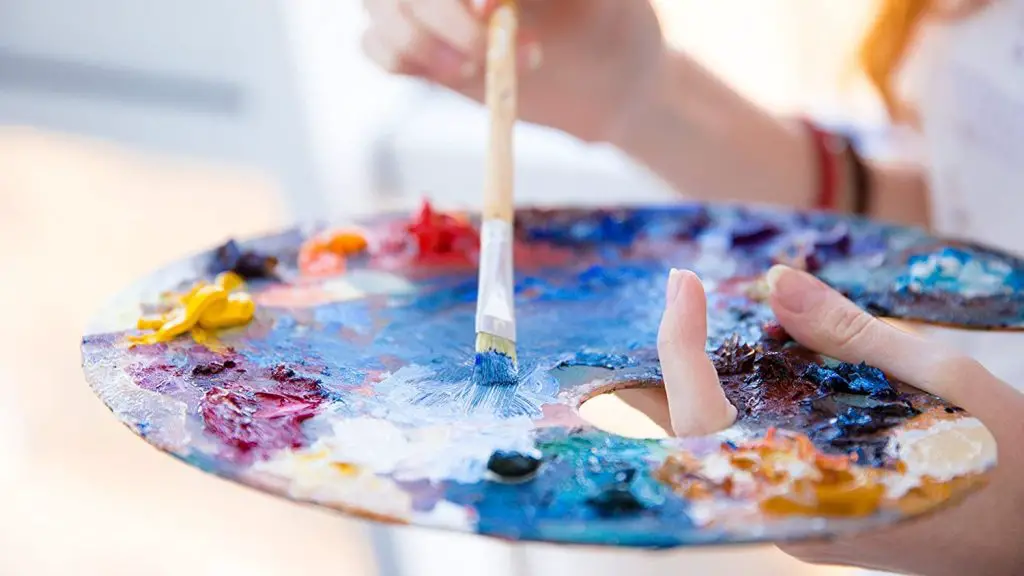
In this article, we will be discussing how to paint on canvas. We will be going over the supplies you will need, the steps involved in the process, and some tips to help you create a masterpiece.
So whether you are a beginner or an experienced painter, read on for everything you need to know about painting on canvas!
Affiliate Disclaimer: This post may contain affiliate links, which means I will receive a commission if you make a purchase using these links.
Different Types of Canvas
Canvas is a sturdy, woven fabric that is often used to make tents, backpacks, and other outdoor gear. It can also be used for art projects.
There are several types of canvas available, each with its own set of benefits. Here is a look at the three of the most common types of canvas used by a professional artist.
1. Canvas Boards
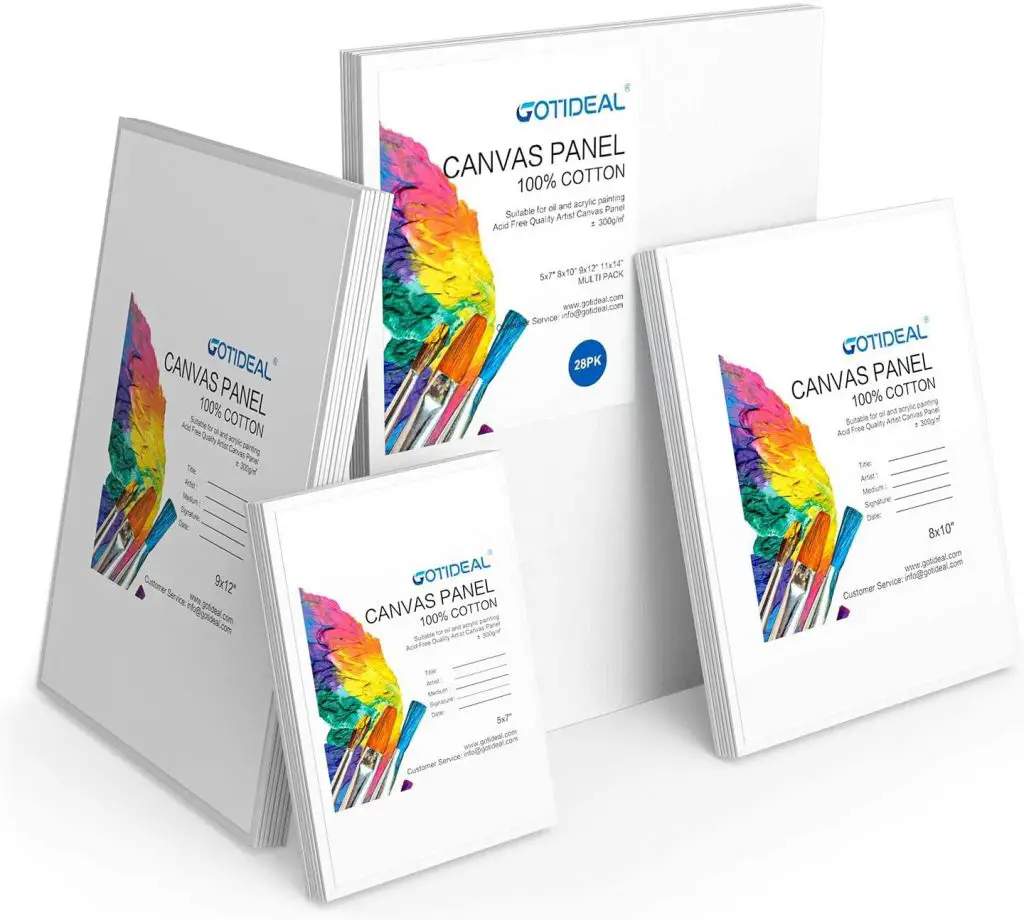
Canvas boards are a type of painting surface that is made of canvas fabric. They are less expensive than other surfaces, such as wooden panels, and they are easier to transport because they are lightweight.
Canvas boards come in a variety of sizes, and they can be used for both oil and acrylic paintings.
2. Stretched Canvas
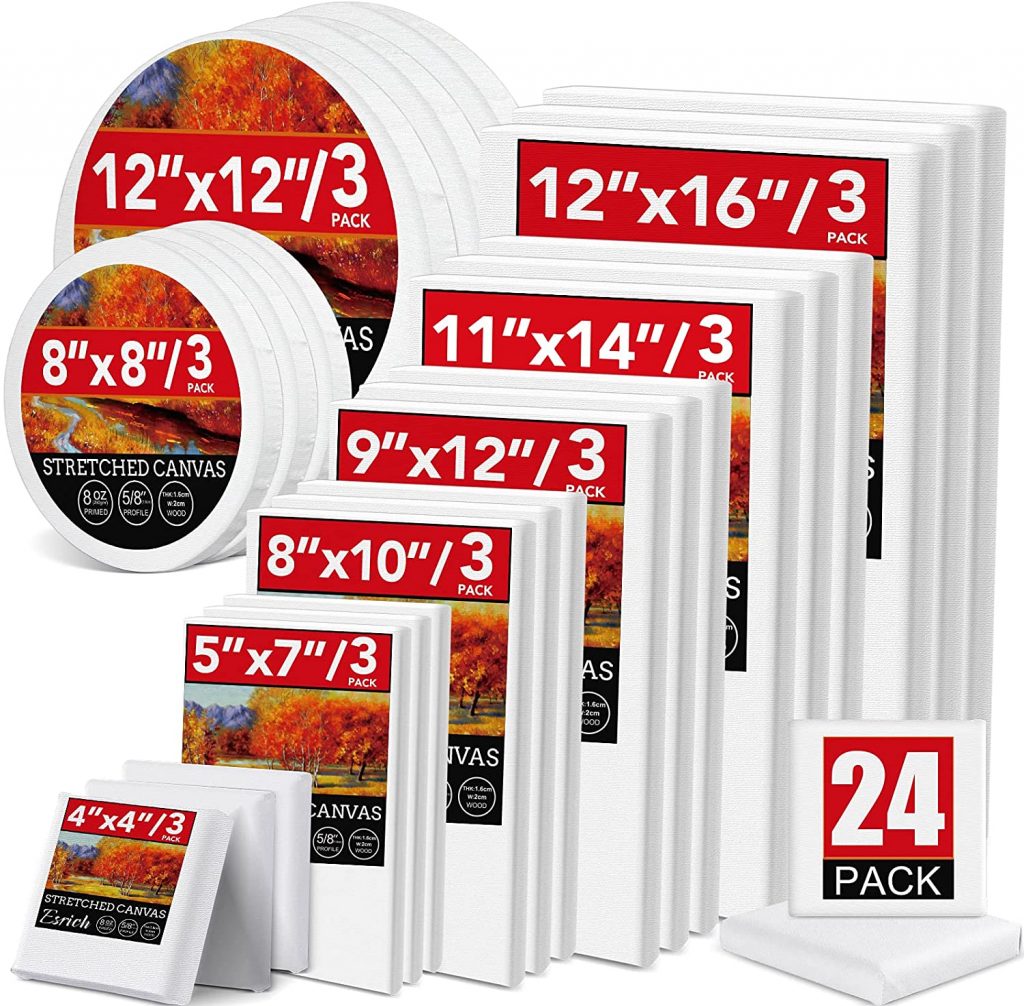
In the art world, there are different types of canvas that artists can use to create their pieces. The three most popular types of canvases are stretched canvases, primed canvases, and unstretched canvases.
Stretched canvases are the most popular type of canvas because they provide a stable surface for artists to work on and they are easy to transport.
The canvas is stretched tightly over a wooden frame and the tension holds the fabric taut.
3. Canvas Panels
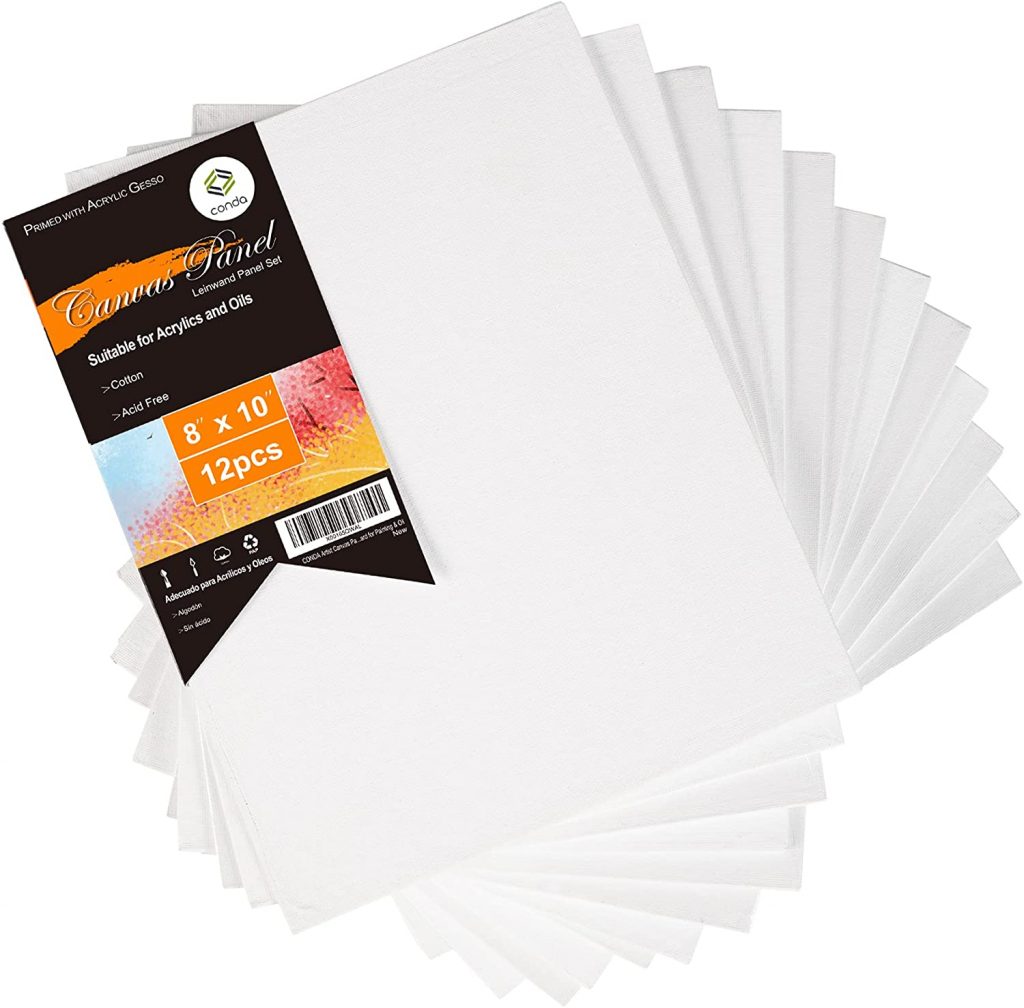
Canvas panels are a great way to start a painting. They are less expensive than stretched canvas and can be used repeatedly. You can also buy panels that are already primed with white paint.
This is a great way to save time because you don’t have to prime the canvas yourself.
Canvas Painting Ideas
One of the best things about canvas painting is that there are no rules. You can paint whatever you want, however you want. This leaves a lot of room for creativity and experimentation.
If you’re stuck on ideas, here are a few to get you started.
Subject Matters for painting on Canvas
1. Painting Still Life Composition.
Still life has been an important part of the artist’s repertoire for centuries. It is a way for the artist to study and explore the form, color, and texture of objects in a controlled setting.
The arrangement of objects in a still life can be a challenge for the artist, but the results can be beautiful and thought-provoking.
In this still life composition by Ms. Duke, you can see how she plans and develops her idea from start to finish. As a beginner, this is a good example to model your canvas painting approach.
Cocktail Recipe by Minerva Duke
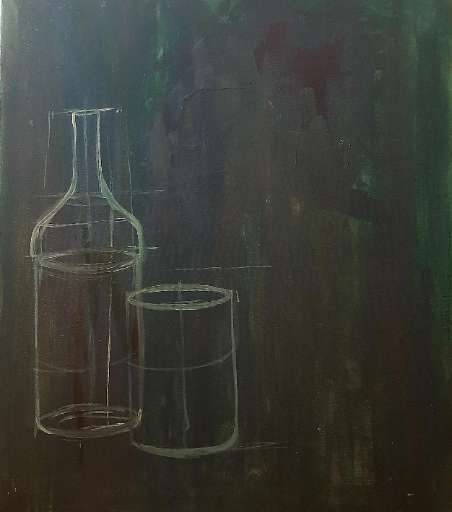
In stage one, your aim is to sketch out the objects that will be a part of your composition using chalk, your brush with light value paint, or a graphite pencil.
Here Ms. Duke applies a base color first before sketching.
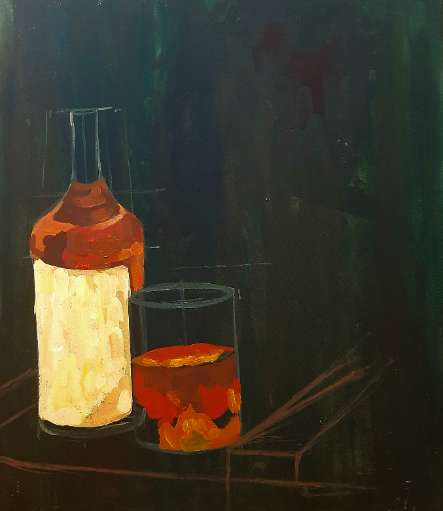
In stage two, Ms. Duke applied colors to capture the basic shapes of the objects in the composition.
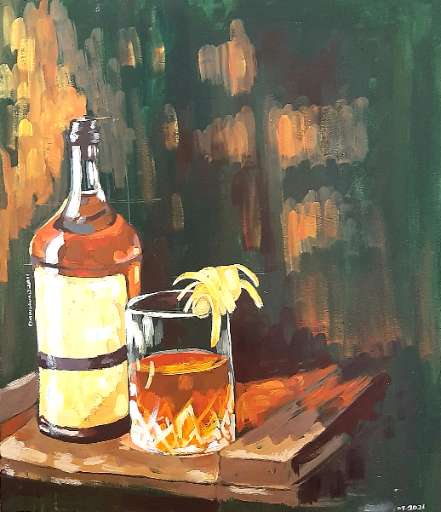
In stage three, you want to strive to create three-dimensional forms in your composition. Ms Duke achieved this by showing the areas of lights, darks, and shadows.
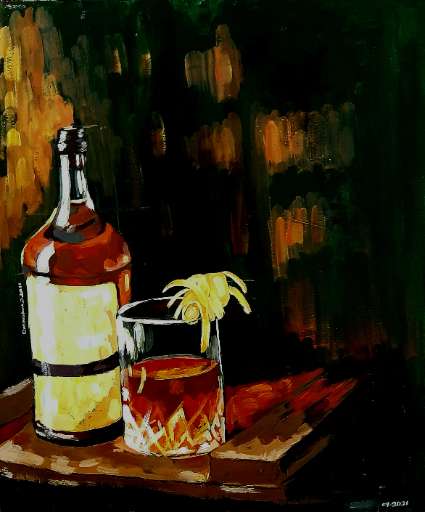
In the final stage, you want to ensure all your colors and value are in the right places to create the desired finished effect you are looking for.
2. Painting Seascape.
A seascape painting is one that captures the beauty and power of the ocean. It can be a simple painting of a sunrise or sunset over the water, or it can be a more complex painting with waves crashing against rocks. Whichever type of seascape painting you choose to create, composition is key.
Rough Shores by Zoya Khan
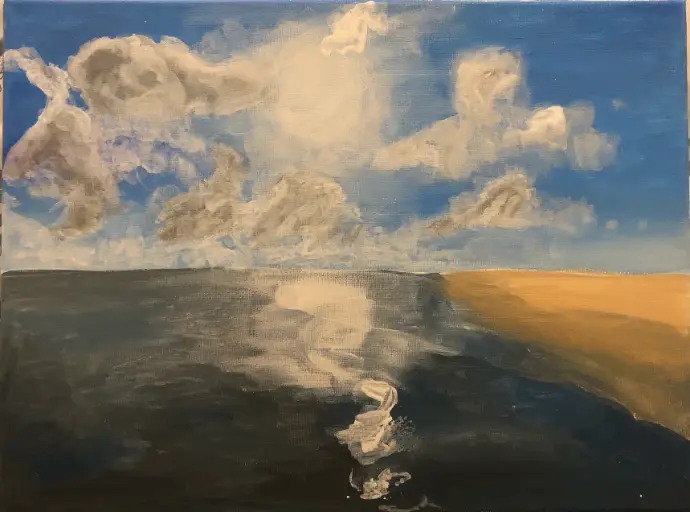
Basic application of colors to ‘map out’ all the areas in the composition.
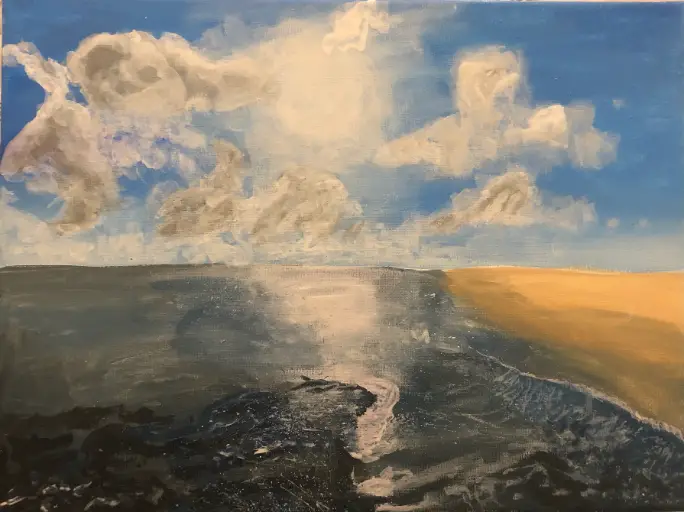
Adding details to create space and three-dimensionality in the composition.
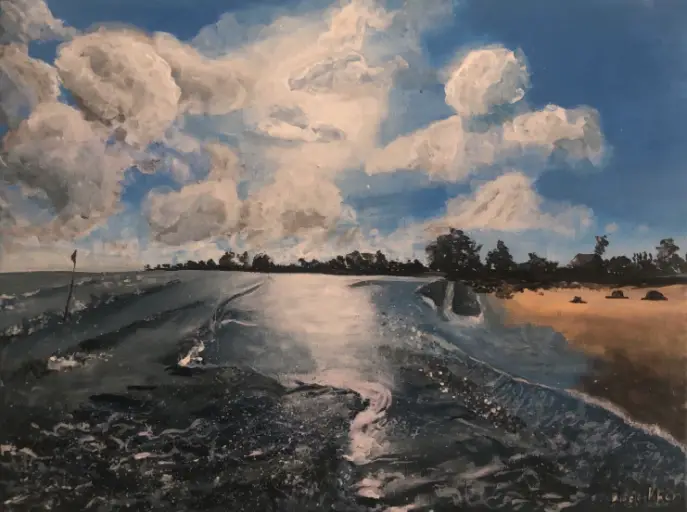
Working to complete the final composition by adding all the relevant details to show space, and atmospheric perspective so that you capture the desired effect in the finished piece.
3. Painting Abstract Art.
Abstract art is a form of art that does not depict objects realistically. Instead, abstract art comprises shapes, colors, and textures that evoke emotion or create a feeling in the viewer. Abstract art can be created with any type of medium, including paint, ink, and clay.
Abstraction by Bevan Allicock
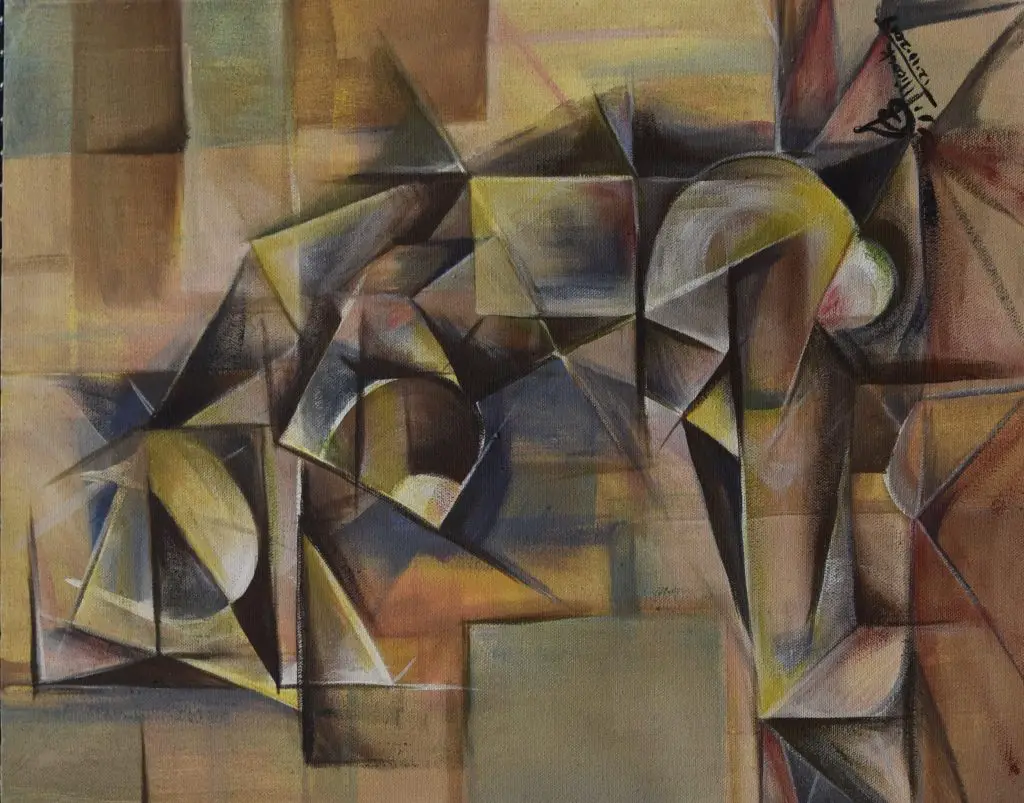
4. Painting Birds.
There is something about painting birds that just seems to appeal to many artists. Perhaps it is the challenge of capturing the beauty and essence of these creatures in a painting.
Or maybe it is the simple joy of watching a bird perched on a tree or flying through the sky. Whatever the reason, bird paintings are some of the most popular works of art around.
And there are many ways to paint birds, from realism to impressionism to abstraction.
Macaw by Owen Scipio
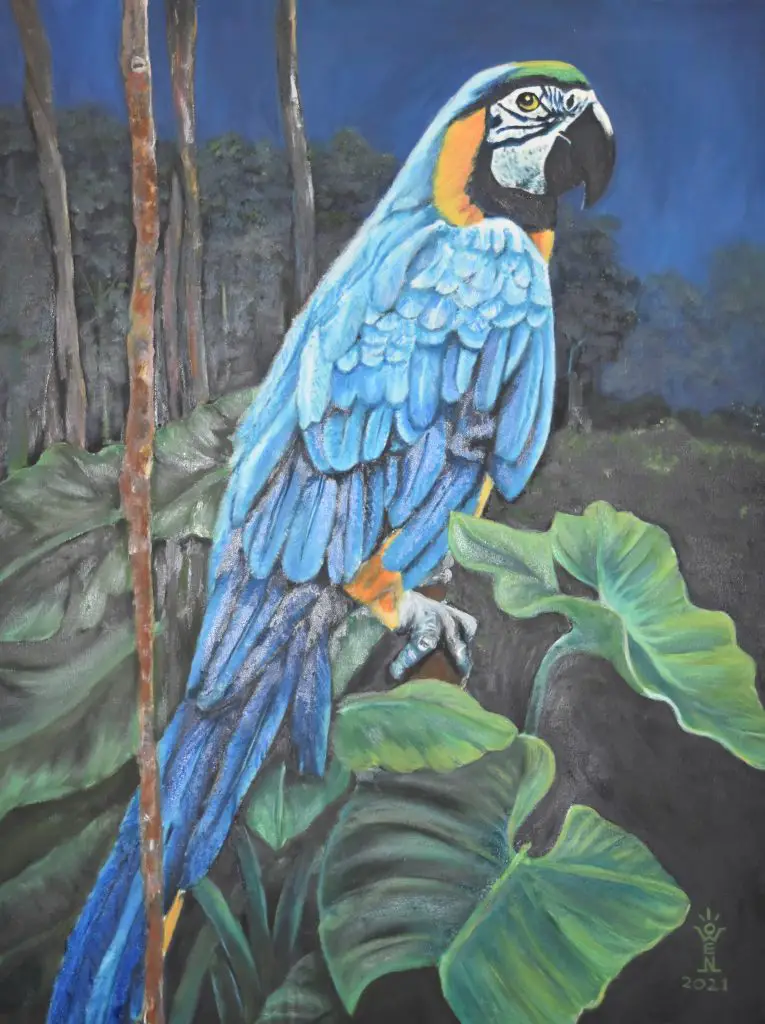
5. Painting Portraits
Portrait painting has been around for centuries and is a popular form of art. A portrait painting can capture the essence of a person and be a beautiful piece of art.
There are different techniques that can be used in portrait painting, and each artist has their own style.
Self Portrait by Sherral Daniels
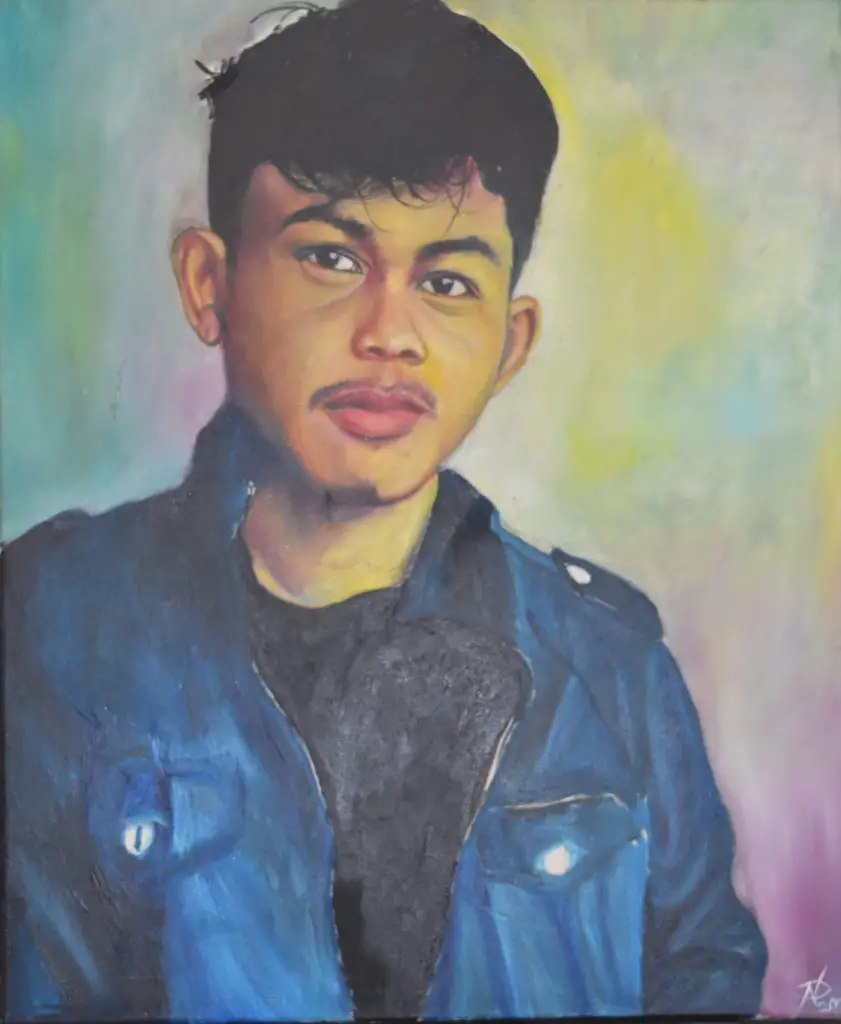
The Painting Process
The painting process on canvas is a long and tedious one, but the result is worth it. First, the artist must sketch out their idea on canvas using a light pencil to get the proportions and composition right.
Once the sketch is complete, they paint in the background area using an appropriate size brush.
Next, they add in the details of the painting. Finally, you add any final touches and highlights to complete your composition.
Painting Techniques
One of the great things about painting is the number of techniques that are available to the artist.
These techniques can create a wide variety of effects, from realistic portrayals of the world to highly abstract pieces that express the artist’s innermost thoughts and feelings.
Here are some painting techniques you can explore for your next project:
- dry brushing.
- impasto.
- glazing.
- expressive brushstrokes.
- sponging.
- and stippling.
Each technique has its own unique look and feel. The best way to learn about painting techniques is to experiment with them yourself.
You can also learn about painting techniques by studying the work of other artists and art tutorial videos on YouTube.
Acrylic Painting
In acrylic painting, the artist typically uses this opaque medium to create a work of art. The artist may use various tools and techniques to create a work, including brushes, palette knives, and sponges.
Acrylic paint is fast-drying and can be diluted with water or acrylic medium. It is also non-toxic, making it a popular choice for professional artists and beginners who are new to painting.
Oil Painting
You can create oil paintings on a canvas or canvas panel. Oils are slow drying, allowing more time to blend colors and textures.
The paints are also translucent, meaning that they allow layers of color to be visible through one another. This characteristic makes it possible to create deep, rich colors and subtle transitions.
Types of Paint to use on Canvas
One of the first decisions an artist has to make when starting a painting type of paint to use.
This decision can be based on several factors, such as the desired outcome, the type of surface being used, and the painter’s personal preferences.
There are many types of paint that can be used on canvas. Acrylic paint is one type that is often used by artists. It is a fast-drying paint that can be mixed with other colors to create different shades.
Oil paint is another type of paint that can be used on canvas. It is a slow-drying paint that is often used by artists to create detailed paintings.
Paint Brushes to use on Canvas
There are different paintbrushes that can be used when painting on canvas. The size, shape, and type of bristles all play a part in the final outcome of the painting.
Some brushes are better for more detailed work, while others are better for covering large areas. The most important thing to consider when choosing a paintbrush is the type of paint that will be used.
Art Supplies
Paint brushes, canvas, and paints are the typical supplies used for painting on canvas. However, there are many other items that can create interesting effects.
For example, stencils can create patterns, sponges can create textures, and metal washers can create circles.
Adding gesso to a canvas can give it a smoother surface, and adding acrylic medium to paint can make it more transparent.
Final Thoughts on How to Paint on Canvas
In conclusion, painting on canvas is a fun and rewarding activity that people of all ages can enjoy.
You have seen from the information we have shared that with just a few basic supplies and some practice, you can create beautiful works of art that will last for generations.
So get out your paints and brushes, and start painting!
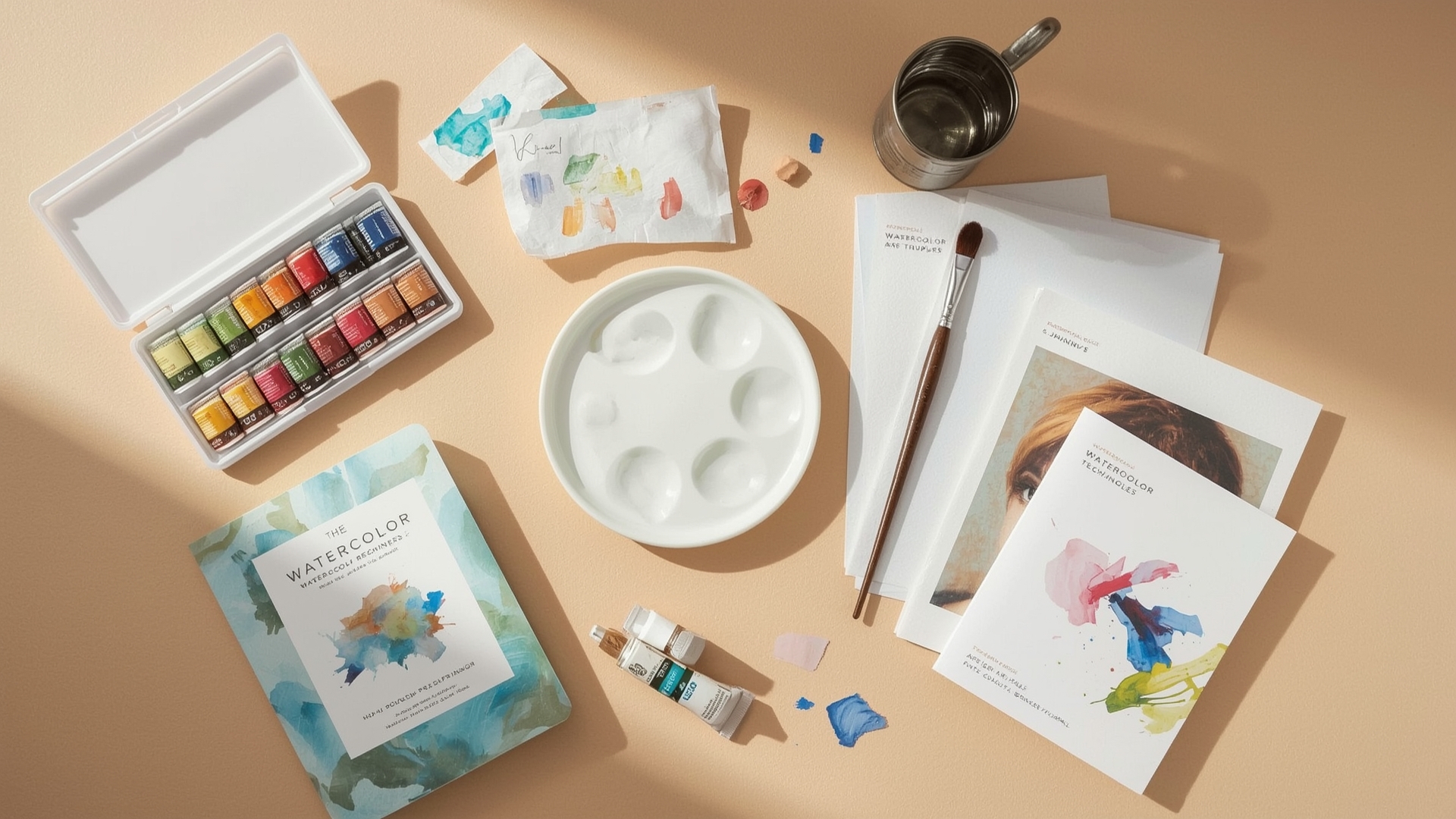
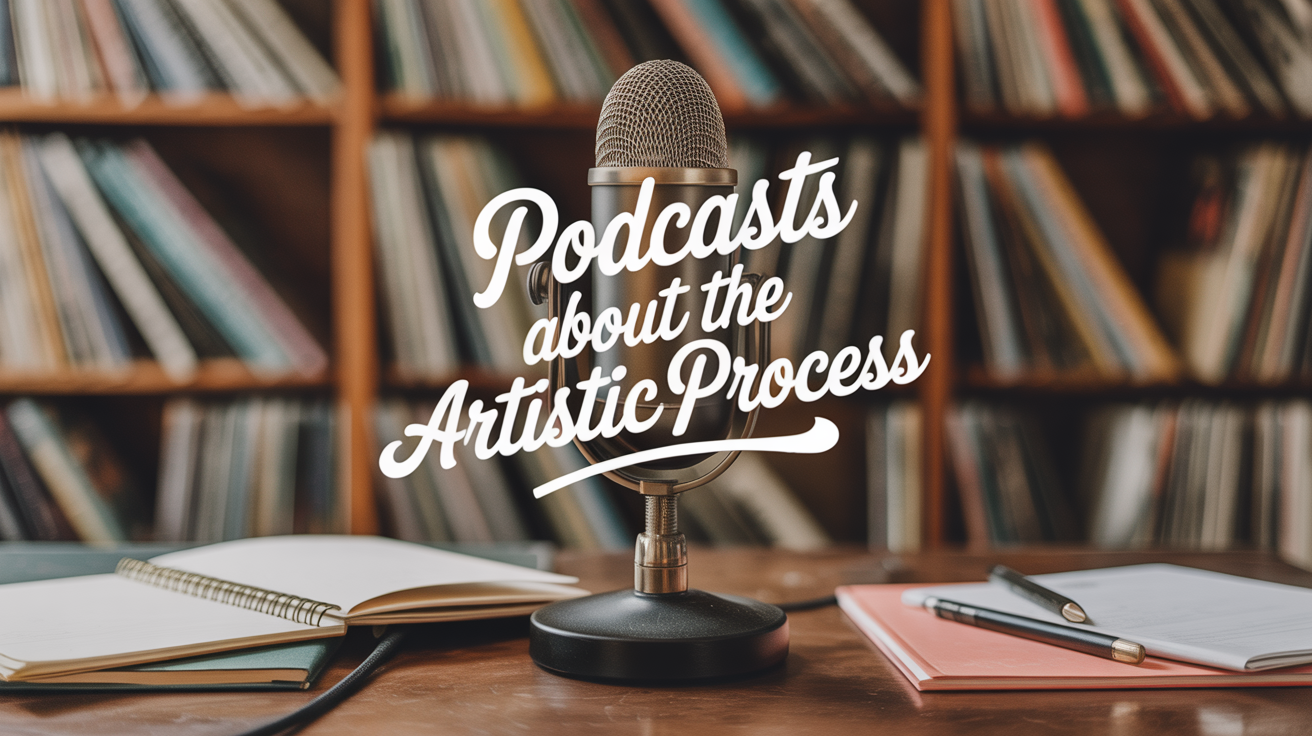
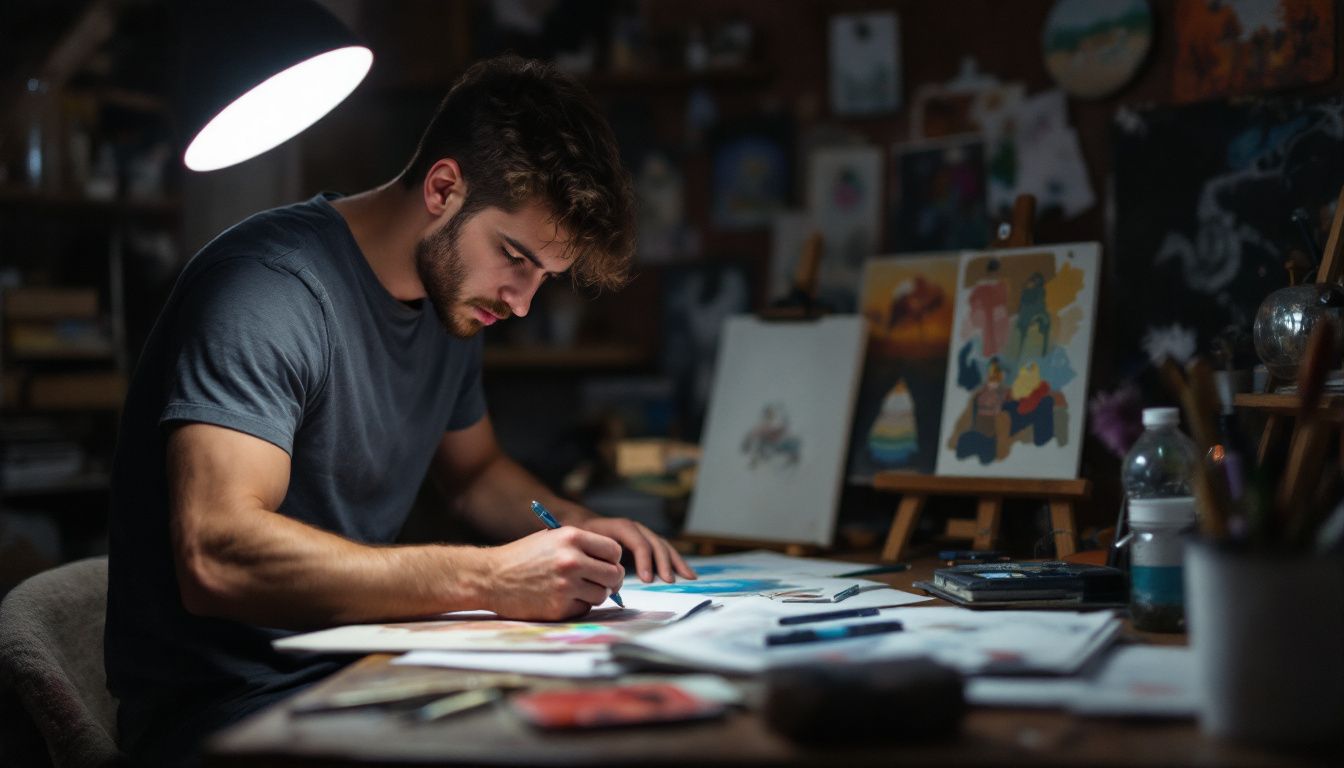
Leave a Reply